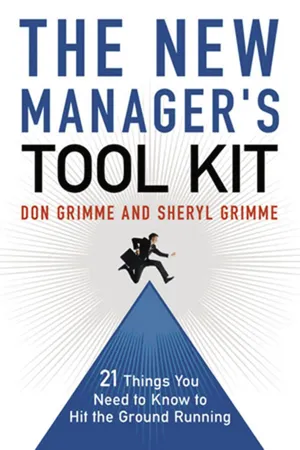WHAT DO EMPLOYEES WANT?
What do you think employees most want from their jobs? Good wages? Job security? That’s what most managers have thought for at least the past 60 years.
But it is not what employees continue to say! As shown in Table 1-1, what employees really want are appreciation and involvement.
Note the glaring disconnect between manager opinion and employee fact.
Are we saying—or are employees saying—that competitive wages are unimportant? Of course not. Money usually is a necessary but not a sufficient condition to attract, retain, and motivate good employees. (By the way, money isn’t even always necessary. Notice how energized and enthusiastic unpaid volunteers often are.)
Test this out yourself. Remember a time when you felt energized, fulfilled, and excited about your job or a project, when you couldn’t wait to get out of bed and get to work. If, unfortunately, nothing comes to mind, remember a time when you felt frustrated, bored, or dispirited about your job, when you had to force yourself out of bed to go to work.
What were you doing and what was special—or not special—about it? Was it the pay and fringe benefits? Maybe, for the first few days. Or was it the stimulating work, the stretching of your abilities, being an important part of a grand venture, the rapport with coworkers, the recognition from superiors?
Table 1-1. What Employees Want from Their Jobs
| Factors | Managers | Employees |
| Full Appreciation for Work Done | 8 | ➀ |
| Good Wages | ➀ | 5 |
| Good Working Conditions | 4 | 9 |
| Interesting Work | 5 | 6 |
| Job Security | ➁ | 4 |
| Promotion/Growth Opportunities | ➂ | 7 |
| Personal Loyalty to Workers | 6 | 8 |
| Feeling “In” on Things | 10 | ➁ |
| Sympathetic Help on Personal Problems | 9 | ➂ |
| Tactful Disciplining | 7 | 10 |
SOURCES: Foreman Facts, Labor Relations Institute of New York (1946); Lawrence Lindahl, Personnel Magazine (1949)
Repeated with similar results: Ken Kovach (1980); Valerie Wilson, Achievers International (1988); Bob Nelson, Blanchard Training & Development (1991); Sheryl & Don Grimme, GHR Training Solutions (1997–Present)
If you find that it’s the former, please write to us. (You’ll be the first; and we have been asking this same question for years—on our websites and in our newsletter, workshops, and presentations.) Otherwise, the only thing we would add to your insight is the assurance that such insight is not unique—to you, your profession, job level, generation, or socioeconomic group.
And notice that while managers rank promotion/growth opportunities among the top three motivators, employees rank this toward the bottom. This is important to some employees (perhaps to you), but overall, not so much.
Lest there be any doubt, these discrepancies between manager opinion and employee fact are good news, for at least two reasons. First, increased wages and job security (which managers think are most important) are precisely what many organizations cannot provide these days; whereas appreciation and involvement, which employees really want, can be provided anytime, at little or no cost. As for those promotion and growth opportunities, often you are not able to provide these to many of your employees. The second reason is that most managers out there don’t really get it. If you do, your department and organization can win the battle for leading people, regardless of budget.
This is all very nice, but you are trying to run an enterprise. How does this affect the bottom line?
Well, in 1998, The Gallup Organization studied the impact of employee attitudes on business outcomes. They found that organizations—where employees have above average attitudes toward their work—have:
• 38 percent higher customer satisfaction scores
• 22 percent higher productivity
• 22 percent better employee retention
• 27 percent higher profits
Satisfying employees is not only a nice thing to do, it also makes good business sense.
Our first tool unlocks employee retention with a deeper exploration of motivation. We examine the current challenge of retention, review some classic motivation theories, introduce our own 3-Factor Theory, present hard data from recent landmark studies that support the theories, reveal the secret and our Top 10 Tips to turn on talent and turn off turnover, and launch you on an application to apply all of this to your staff.
Tool #2 releases employee productivity by exposing a phenomenon that is impairing it—increased job demands. We examine that phenomenon, including highlights from recent studies, share our secret for dealing with it, provide tips to ameliorate the negative impact of job demands, and suggest an initial application for your workplace.
Tool #3 opens an issue of increasing importance to today’s employees: work/life balance. You will learn how important it really is, the critical role you play, the secret, and specific principles to deal with it effectively. As always, an application is included.
